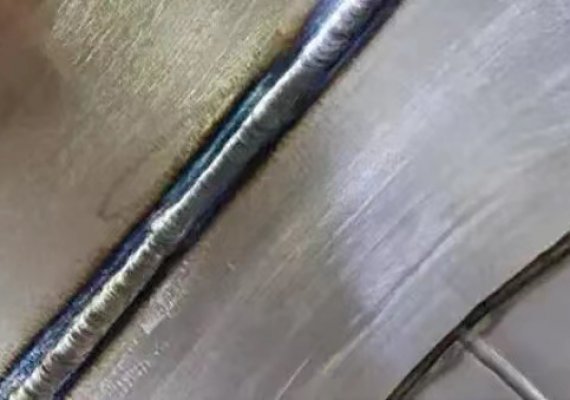When the stainless steel pipe in petrochemical construction is welded, the surface of the weld bead and the heat-affected zone is prone to oxidation and discoloration. In order to ensure the corrosion resistance of the stainless steel, the weld is pickled and passivated after welding to form a dense layer on the surface However, the inner wall of the stainless steel pipe is often unable to be pickled and passivated, which seriously reduces the corrosion resistance of the inner wall of the stainless steel pipe. However, the general welding process and construction measures are difficult to guarantee the welding quality of the backside bead and heat-affected zone (see Figure 1 and Figure 2), so the welding process must be improved and measures should be taken to prevent the backside from oxidizing and discoloring.


(Figure 1 The heat-affected zone of the back weld bead is severely oxidized)


(Figure 2 Local oxidation of the back weld bead joint)
1.Analysis of the reasons why the back surface of stainless steel pipe welding is easy to oxidize
(1)When the backside is filled with argon protection, the air in the tube has been vortexed and it is difficult to completely drain. Even if the replacement time is extended, the oxygen content can reach <0.01% (volume fraction) when the inner mouth is fully sealed, but the opening of the groove begins After welding, the oxygen content will rise to 0.05% (volume fraction) or even higher. The higher oxygen content eventually causes the back surface of the weld bead to oxidize and become blue or purple.
(2)Infield construction, welders generally use a simple argon arc welding torch that scratches the arc to start the arc. This torch causes the high-temperature weld bead to lose the argon protection instantaneously after the arc is cut off, causing the joints of each arc to be easily oxidized and discolored.
(3)Every time the arc joint is started because the air enters the inner opening through the open welding groove, it happens that the oxygen content in the inner opening is higher at this time, and the high-temperature weld bead is easy to be locally oxidized.
(4)When filling and welding the cover layer, the welding current is large, the welding heat input is large, or the interlayer temperature is high, the back of the weld bead will also oxidize and change color.
(5)The low purity of argon gas and the high oxygen content will reduce the protective effect of the weld.
(6)Stainless steel has poor thermal conductivity, which is 1/3 of that of steel. The heat cannot be dissipated during welding, resulting in higher temperatures in the weld bead and heat-affected zone, which makes it easier to be oxidized.
2.Welding process improvement
(1)The oxygen in the shielding gas inside is the main cause of oxidation and discoloration of the weld bead and the heat-affected zone, so the oxidation problem can be solved by removing the oxygen in the shielding gas. After the improved process, high purity argon with a purity of 99.999% is used as welding gas, mixed gas (5%H2+95%Ar) is used as a back shielding gas, and the chemical reaction of hydrogen and oxygen at high temperatures is used to reduce the oxygen content in the tube.
(2)The density of argon is higher than that of air. When replacing the air in the tube, the principle of low charge and high discharge shall be adopted, and at the same time, the charge and replacement time shall be appropriately extended.
(3)Use welding machines and high-frequency arc welding guns with functions of slow current rise, current attenuation, early gas supply, and delayed gas stop. When the arc is just started, the burning arc is used to burn the oxygen in the shielding gas first to avoid the oxidation of the weld bead when the arc is started. Local oxidation and discoloration.
(4)Increase the diameter of the nozzle and use nozzles of φ10~φ12mm to increase the protection range.
(5)The sealing groove adopts tin foil tape with good sealing performance, not paper tape.
(6)When the final joint is closed, reduce the argon-filled flow. It is best to use the same argon-filled flow and open the exhaust on one side for the best welding effect.
(7)The interpass and interlayer temperature control should not exceed 60℃. During welding, cooling copper pipes wrapped with circulating water on both sides of the weld or cotton damp cloth can be used on both sides of the weld to cool down to reduce the high-temperature residence time of the weld.
(8)The first three layers are welded by argon arc welding with small heat input, and at the same time, the inner mouth is filled with argon gas for protection, and the welding rod is used for welding after reaching a certain thickness. Regardless of whether it is argon arc welding or electrode arc welding, the current should be as small as possible, and the arc operation method of straight walking or micro-swing is adopted. The faster the welding speed is, the better under the premise of ensuring the welding quality, thereby reducing the welding heat input and avoiding welding. Road temperature is too high and oxidized.
Like this page? Share it with your friends!


